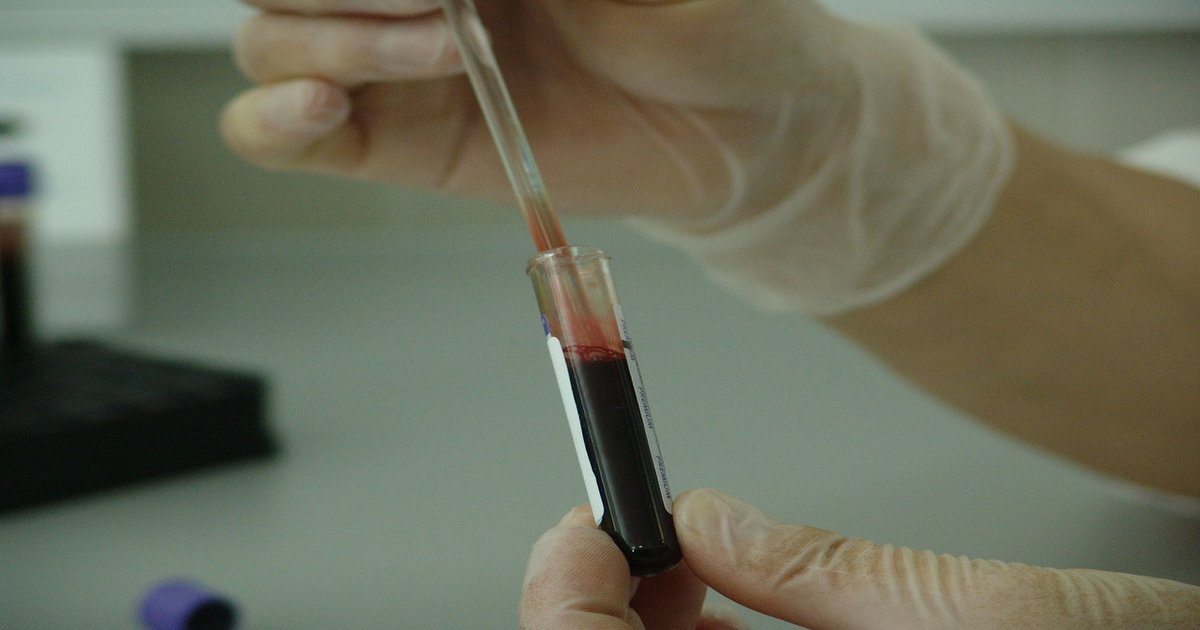Mesothelioma Help Cancer News

Show Your Support for the Fight Against Mesothelioma
 Each year in the United States, about 3,000 people receive the devastating diagnosis of mesothelioma, an aggressive cancer whose only known cause is exposure to asbestos. Mesothelioma is not a common cancer. It doesn’t receive the attention and research funding support that other more well-known cancers receive. However, its effects are just as serious and life-changing to those patients who are fighting it.
Each year in the United States, about 3,000 people receive the devastating diagnosis of mesothelioma, an aggressive cancer whose only known cause is exposure to asbestos. Mesothelioma is not a common cancer. It doesn’t receive the attention and research funding support that other more well-known cancers receive. However, its effects are just as serious and life-changing to those patients who are fighting it.
That’s why Mesotheliomahelp.org has launched a special fundraising campaign to raise awareness and support for the fight against mesothelioma. Money raised through this campaign will be donated to the Mesothelioma Applied Research Foundation, the only nonprofit organization dedicated to ending mesothelioma and the suffering caused by it.
To do your part in supporting the fight against mesothelioma:
1. Order an “I Support Mesothelioma Research” T-shirt from Booster.com. Wear it around town. Share photos of yourself in it on social media. Anything to raise awareness of the plight of those suffering from mesothelioma.
2. If you run a website or blog dedicated to helping those who have been diagnosed with mesothelioma, please add this badge to your website to show your support and encourage others to donate by purchasing a T-shirt.
3. Share this campaign on your social media accounts, and tell your friends how they can get involved in the fight against mesothelioma.
4. Feel good knowing that your donation to this campaign will go toward mesothelioma research at the Mesothelioma Applied Research Foundation, and that research may one day save lives.
At Mesotheliomahelp.org, we are dedicated to helping mesothelioma patients through their difficult journey. It is an uphill battle, and these patients deserve all the help — and hope — they can get.
We hope you and your organization will join Mesotheliomahelp.org in our fight for a cure. Get involved today!

microRNA Could Be the Key to Mesothelioma Development
Recently, microRNAs have received lots of attention as a significant scientific and medical discovery. They appear to play a major role in reprogramming a cell to undergo uncontrolled cell division, causing growth of cancerous tumors. Now, researchers believe the microRNA drives the development of lung cancer.
An important new study from Vanderbilt University published December in The Journal of Clinical Investigation suggests the miR-31 microRNA is expressed at high levels in lung cancer tumors, and it is indicative of decreased survival.
http://www.jci.org/articles/view/82720
“We discovered that miR-31 is an independent survival factor, meaning that its expression impacts survival, independent of other factors such as tumor size, tumor burden and tumor location,” said Christine Eischen, Ph.D., professor of Pathology, Microbiology and Immunology, Vanderbilt University, according to a Jan. 28 press release from Vanderbilt-Ingram Cancer Center. “That suggests it’s very important.”
https://news.vicc.org/2016/01/study-identifies-new-culprit-in-lung-cancer-development/
Although the research was focused on lung cancer, every new breakthrough in cancer research brings hope to mesothelioma patients. Pleural mesothelioma, an asbestos-caused cancer equally as aggressive as lung cancer, is diagnosed in close to 3,000 Americans each year.
microRNAs, or miRNAs, are tiny molecules found within cells that serve a function in primary biological processes such as organ development, fat metabolism, cell proliferation and death. They are single stranded molecules that regulate gene expression. When miRNAs function properly, a person remains healthy. However, disregulation of miRNAs can lead to diseases, including mesothelioma and other cancers. On the contrary, when used as therapeutic agents, miRNAs can inhibit tumor growth.
The Vanderbilt researchers began to focus on the miR-31 protein when they found elevated levels resulted in increased cell transformation to tumor-like cells and cell growth. Via mouse models injected with human lung cancer cells, the researchers confirmed increased lung tumors with miR-31 over-expression.
“When we left miR-31 on for longer and longer periods of time, we saw the formation of adenomas (benign tumors) and then lung carcinomas,” said Eischen. “Mick [Mick Edmonds, Ph.D. and study lead] and I were thrilled with these results because no one had previously shown a microRNA could induce cellular transformation in the lung and cause cancer to develop.”
The teams’ findings suggest targeting miR-31 could lead to innovative treatment therapies to suppress tumor growth in patients with lung cancer, and potentially for malignant mesothelioma patients.
Targeted therapy for mesothelioma and lung cancer patients optimizes the potential for success of the treatment and offers treatment options that may not otherwise have been considered. There is no cure for mesothelioma.
The study was published in the Dec. 14 issue of The Journal of Clinical Investigation.

Cheer Up A Mesothelioma Patient With Some Fun Decorations
The winter blues. The long, cold, winter months can seem to last forever! For someone who may be extra sensitive to the cold or unable to leave their home, like many mesothelioma patients, it can be even more vexing.
With Valentine’s Day this week, it may be a nice idea to take a card, candy, or some small gift to your loved one. On St. Patrick’s Day, wear your favorite green and greet them with a shamrock! These are small things that could brighten up their days.
If the person happens to be in the hospital, check and see if you could decorate their room. Hanging a few simple decorations could be just the thing to lift their spirits. The same thing goes for their home… a little bit goes a long way.
Besides the holidays, paying a visit to someone with mesothelioma, their caregivers, or ones who may have been left behind, can make all the difference. As I always say, let them lead the conversation – they may be up to talking about their condition, or might not want to bring it up at all! Knowing that people care is one of the best gifts you can receive when dealing with any kind of trying situation; the mesothelioma community is no different in this respect!
During this cold season, warm it up with some hot cocoa, good company, and love. Remember that even though it may be dreary outside, it doesn’t take much to make the inside inviting and full of life!
Know more about Mesothelioma and how you can deal with it.

Biomarker May Be Useful Prognostic Factor for Mesothelioma
Nearly 3,000 Americans a year hear the words, “You have mesothelioma.” While the available treatments can relieve symptoms, they do little to improve survival. Stage of the disease, lifestyle, gender and age all play into a patient’s survival. Now, researchers believe that the fibulin-3 biomarker may be another indicator for survival in mesothelioma patients.
Researchers from the Asbestos Diseases Research Institute of Australia, report that while fibulin-3, a protein that floats in blood plasma and in some bodily fluid, has previously been identified as a potential diagnostic marker for mesothelioma, it is also reliable as a prognostic marker. Such biomarkers as the fibulin-3 protein are being sought as a means to detect pleural mesothelioma at an earlier stage, to assist in prognosis, and to individualize treatment strategies for mesothelioma patients.
In a recent study, the researchers measured the amount of fibulin-3 in plasma and pleural effusion from malignant pleural mesothelioma patients and in tumor-bearing mice. They found that fibulin-3 was over-expressed in all mesothelioma lines and that there was a correlation between the expressed and secreted levels. They discovered that the fibulin-3 levels in “pleural effusion fluid were found to be independently associated with prognosis.”
In a 2012 study, using a simple blood test and a lung fluid test of pleural effusion, researchers from NYU Langone Medical Center, led by Dr. Harvey Pass, Director, NYU Division of Thoracic Surgery and Chief of Thoracic Oncology, at NYU Langone, found that the protein fibulin-3 is four to five times more elevated in individuals with mesothelioma than those without. By measuring the levels of fibulin-3 the researchers were able to distinguish healthy people with exposure to asbestos from patients with mesothelioma establishing the protein as a potential mesothelioma diagnostic marker.
According to the NYU Langone website, the team is continuing to study the usefulness of fibulin-3 as a diagnostic marker through “a large validation study using an asbestos exposed cohort of individuals in Santiago Chile.” The study, funded by the NCI, was scheduled to begin in the third quarter of 2015.
Pleural mesothelioma, a rare form of cancer affecting the lining of the lungs, is highly aggressive and there is no cure for the disease. Any research unique to mesothelioma brings hope to the community that finding a new, effective treatment is on the horizon.
The results of the ADRI study were published in the Sept. 2015 British Journal of Cancer.
Mesothelioma Treatment Goals May Change as the Disease Progresses
We are all goal-oriented in some way, although some more so than others. When patients are diagnosed with mesothelioma, their goals of care are discussed. No one wants the mesothelioma patient, or their family, to suffer with interventions that are not effective. The goals of therapy are individual and are, ideally, made jointly with the mesothelioma team. While goals established in a business environment usually have a timeline and benchmarks attached, for mesothelioma patients, it is not that clear cut.
When first diagnosed with mesothelioma, many people are determined to fight. They make it their mission to learn all about the disease: where to go for treatment, clinical trials, what can do they, what can their family do. Unfortunately, for many diagnosed with mesothelioma, disease progression can be rapid.
A patient I cared for this week had been diagnosed over two years ago. He and his supportive family have fought mesothelioma aggressively. Together they had been a force. Their goal was always to keep going, don’t give up. The patient had enjoyed some good times with his family and made some memories, but time and disease progression had taken its toll. He had lost weight, did not feel well, was in pain, had no appetite and was continually nauseous. He had also changed, he was accepting and quiet. His family was not. They continued to use their resources and energy to encourage the patient to keep fighting aggressively.
As the patient’s disease had progressed, the options for his therapy became limited. At this point it, it was time to take all that energy and redirect the goals of his care. Just as the family and patient had been a force of nature fighting the disease, it was now time to become a force to fight the pain and the nausea, and to make him comfortable.
People with mesothelioma all have a unique story to tell. Unfortunately, there is not a cure at this point in time. Goals should be set with the mesothelioma team, and as the individual’s disease progresses, the goals should be re-established, as needed.
My patient and his family did re-direct their goals. Now, he is comfortable, home, and they have had conversations that they never had while fighting the disease. Conversations that will become memories as time goes on.
Free Mesothelioma Patient & Treatment Guide
We’d like to offer you our in-depth guide, “A Patient’s Guide to Mesothelioma,” absolutely free of charge.
It contains a wealth of information and resources to help you better understand the condition, choose (and afford) appropriate treatment, and exercise your legal right to compensation.
Download Now